Recent POCO M series phones are renowned for their eye-catching colors and a two-tone design. The POCO M5 offers competitive specifications for the money, just like the bulk of the company’s smartphones. The M5’s hardware lineup this time includes a Full HD+ LCD screen with a 90Hz refresh rate, a new MediaTek Dimensity G99 SoC, a trio of 50 MP cameras, a big battery, and many more features. All of this is yours for the alluring sum of INR12,499. Can the POCO M5 turn into a success? Let’s find out in our review.
POCO M5 Specifications
Before starting with the POCO M5 review, let’s look at the phone’s specifications.
- Display: 6.58-inch FHD+ resolution, 90Hz refresh rate, LCD panel
- CPU: Octa-core MediaTek Helio G99 Processor
- RAM: 4/6GB
- Storage: 64/128GB internal storage
- Software: Android 12 (MIUI 13)
- Main Camera: 50MP (f/1.89) (PDAF) + 2MP depth sensor + 2MP macro sensor
- Selfie Camera: 8MP (f/2.4)
- Connectivity: USB Type C, Wi-Fi, Bluetooth v5.2, GPS/ A-GPS, FM Radio
- Cellular: Dual SIM
- Fingerprint Scanner: Yes, side-mounted
- Battery: 5,000mAh, Li-ion Polymer, 18W fast charging
Box Contents
Here’s a complete list of items you get inside the box:
- POCO M5 smartphone
- 22.5W fast Charger
- USB Type C Cable
- Sim Ejector Tool
- Documentation
Design
The distinguishing color and material finish of POCO smartphones set them out from other smartphones in a crowd. When compared to the POCO M4, the M5 adds a faux leather touch on the back. The phone comes in three different color options, and for this review, we have the POCO Yellow variant. Since this is a low-cost device, the front features Gorilla Glass protection, while the frame and the back have been constructed out of high-quality plastic.

Due to the positioning of the triple camera array and flash, which are on the top left corner and create a star pattern inside a glossy black visor, the phone gets this two-toned look. Turning the phone over reveals a 6.58-inch display with wide bezels and a dewdrop notch.
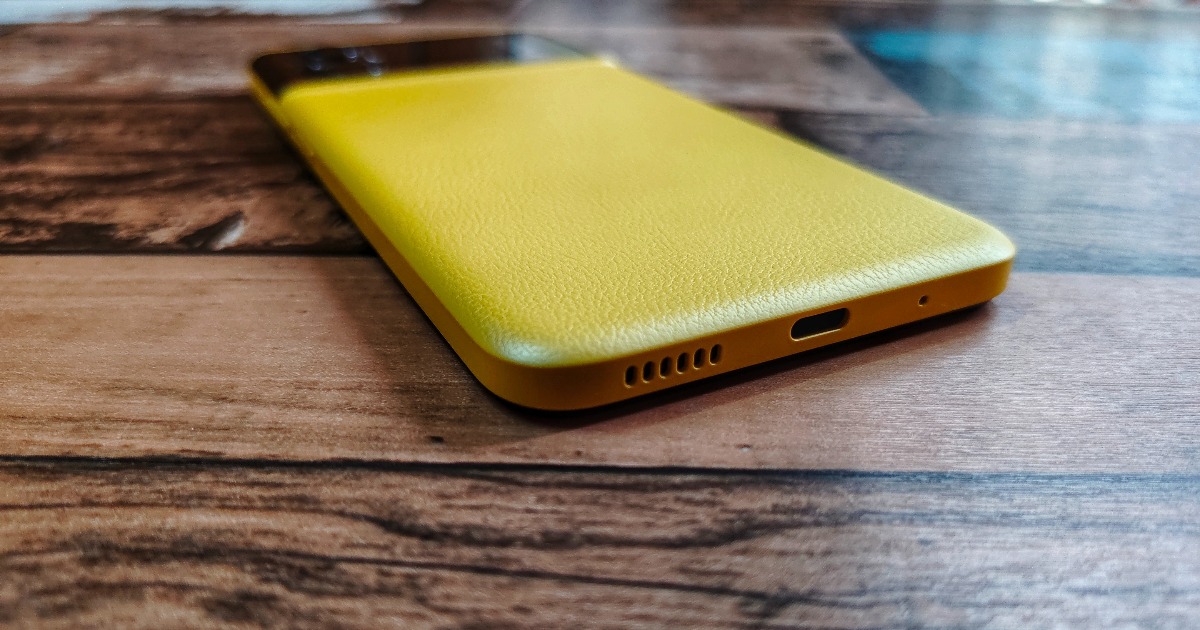
In terms of where the buttons are located, the left side only has the SIM card slot, while the right side has the volume rockers and the power button, which also doubles as a fingerprint sensor. The device contains a 3.5mm audio connector and an IR blaster on the top, and a USB Type-C port, speaker grill, and microphone on the bottom. There isn’t an official IP certification per se, but the SIM tray has a rubber barrier to keep out dust and moisture. The POCO M5 has superb weight distribution while weighing 210 grams, making it easy to use for extended periods of time.
Display
The 6.58-inch LCD screen on the front of the POCO M5 has an FHD+ resolution. The adaptive refresh rate of the display panel can switch between 30Hz, 60Hz, and 90Hz when left in auto mode depending on what is being played on screen. Scrolling through the UI is Smooth and the display gets bright enough to be seen in direct sunlight. The blacks and colors aren’t as vivid, but the viewing angles are comparable to a normal IPS LCD panel at this price.
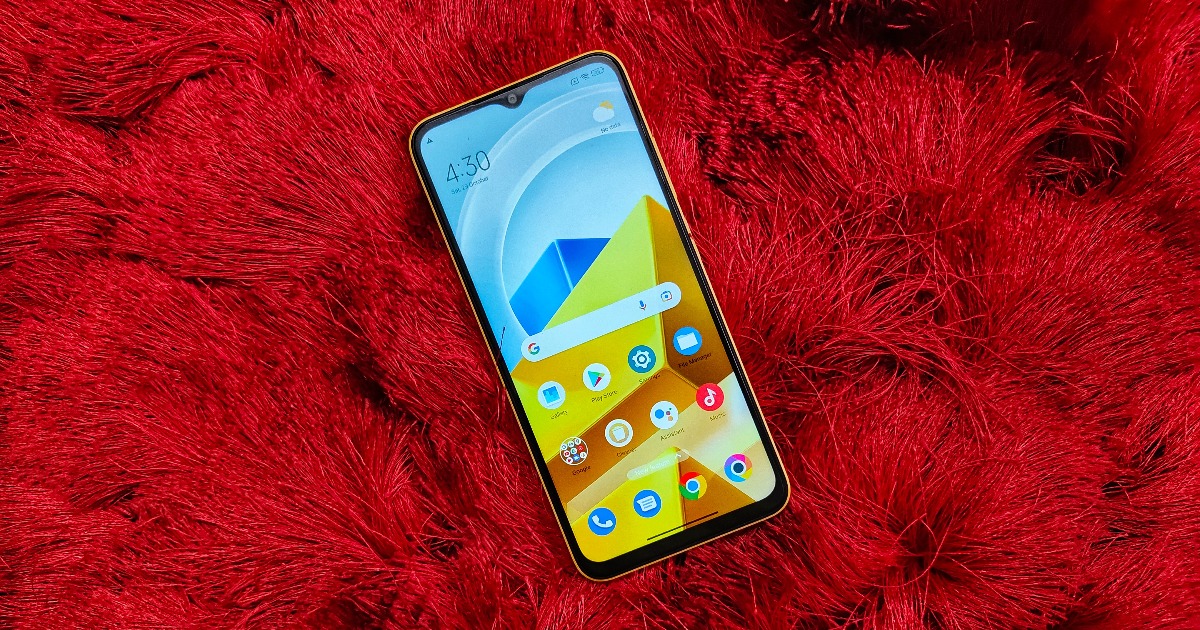
The phone also comes with Widevine L1 certification, meaning that you can enjoy content on all major OTT players in Full HD resolution. The teardrop notch and somewhat wider chin may not be appealing to all buyers, but we didn’t mind them all that much, and they eventually won us over. Yes, it may seem a little dated, but the content is unaffected.
Software
The POCO M5 comes with Android 12 with MIUI 13 skin on top out of the box. As of the time of this review, the phone has the August security patch, and POCO has committed to releasing a fresh security patch every three months. On top of MIUI 13, POCO uses its own POCO launcher with unique icons, giving POCO users a slightly different experience compared to Xiaomi or Redmi users.
When contrasted to custom skins from other OEMs, MIUI 13 typically has a lot more features on offer. However, it occasionally can be a bit excessive for budget devices. The POCO M5, regrettably, has the same problem. You are frequently inundated with unrelated notifications from bloatware apps. Thankfully, they can be taken out. A few stock apps automatically show recommended content and deliver obnoxious notifications, but you can easily turn them off. Nevertheless, there is occasionally a RAM management problem, which we hope POCO will address in future updates.
Performance
The brand-new MediaTek Helio G99 SoC drives the POCO M5. It is a 4G chip and shares the same architecture as that of the Helio G96. This chip is made to appeal to people searching for a performance-focused product around INR 15,000. In order to compete in that lower price bracket, POCO dropped 5G on the M5 in favor of features like an adaptive refresh display, a triple camera setup, and a large battery.
When it comes to the POCO M5’s core performance, our tests revealed that the device scored similarly in the 3D Wildlife tests while achieving single-core and multi-core scores of 556 and 1924 in GeekBench v5 and 366800 in Antutu v9. In order to evaluate the phone’s actual performance, we played every major mobile game currently available for around an hour at a time, including Call of Duty Mobile. Considering its price, the phone performed brilliantly.
Overall, the POCO M5 works well in regular use and shouldn’t pose any major issues. Whatever the circumstance, we never noticed the phone getting too warm during our testing period which is always a plus.
Camera
The POCO M5 gets a triple camera setup on the back with a 50MP primary sensor, 2MP macro lens, and a 2MP depth sensor, along with an LED flash placed in a diamond. We aren’t quite satisfied with the choice of sensors and think an 8MP ultrawide would have been more appropriate. An 8MP snapper on the front takes care of all the selfies.

In daylight, the primary camera produces some decent images with slightly cooler colors. The images are sharp, but the highlights are almost always overexposed. Photographs taken with HDR and photos taken without it barely differ from one another. Additionally, this device does not offer AI color mode, in contrast to many other MIUI-powered devices. That said, it does perform surprisingly well in low light.
The other two sensors don’t really add anything, therefore it would have been better to get rid of them and use an upgraded ultra-wide angle lens in their place, as we discussed in the preceding section. The POCO M5’s front camera is a bit of a mixed bag. Although this can be altered in the future with an OTA, the colors in selfies typically appear washed out, but it does well in portrait mode.
Battery
One of the POCO M5’s key selling factors is how long the battery lasts. The phone packs a massive 5,000mAh cell We put the phone through its paces during our test, yet we couldn’t completely drain the battery in a single day. This phone may easily last close to two days for individuals with light to moderate usage. It ships with a 22.5W charger, but can only accept a maximum of 18W current and takes a little under 2 hours to fully top-up the battery.
Verdict
While improving upon past generations, the POCO M5 introduces a number of new features. There are certain advantages to the phone, including an appealing design, a large battery, and a good chipset. The aggressive RAM management of MIUI, bloatware, and app notification difficulties are just a few of the ongoing issues which we hope to get fixed in future updates.
At its current price of INR 12,499, the POCO M5 is a respectable phone for people looking to switch from a feature phone or entry-level smartphone to a decent-budget smartphone.
General
| Price (₹) | 12,499 / 14,499 |
| Variants | 4/64 GB, 6/128 GB |
| Colour Options | Icy Blue, Power Black, Yellow |
Network & Connectivity
| Supported Networks | 2G, 3G, 4G LTE |
| Wi-Fi | Wi-Fi 802.11 a/b/g/n/ac/, dual-band |
| Bluetooth | 5.3 |
| SIM Slot | Dual (nano) |
| Memory Card Slot | Hybrid (SIM+Memory Card) |
| USB Port | USB Type-C |
| NFC | |
| GPS | GPS, A-GPS, GLONASS, BDS |
Build & Design
| Dimensions [LxWxD] | 164 x 76.1 x 8.9 mm |
| Weight (grams) | 201 g |
| Chassis/Frame | Polycarbonate/Plastic |
| Front Protection | Gorilla Glass 3 |
| Back Material | Polycarbonate/Plastic |
Performance
| Chipset | MediaTek Helio G99 |
| Processor | Octa-core (2x2.2 GHz Cortex-A76 & 6x2.0 GHz Cortex-A55) |
| GPU | Mali-G57 MC2 |
| RAM | 4 GB, 6 GB |
| RAM Type | LPDDR4x |
| Storage | 64 GB, 128 GB |
| Storage Type | UFS 2.2 |
| OS | Android 12 |
| UI | MIUI 13 |
Display
| Screen Size (Inches) | 6.58 inch |
| Screen Type | IPS LCD |
| Screen Resolution | 1080 x 2408 pixels |
| Refresh Rate | 90 Hz |
| Aspect Ratio | 20:9 |
| Touch Sampling Rate | 90 Hz |
| Pixel Density (PPI) | 401 |
Cameras
| Rear Camera | Triple |
| Rear Camera Specs |
50 MP, f/1.8, (wide), PDAF 2 MP, f/2.4, (macro) 2 MP, f/2.4, (depth) |
| Rear Camera Features | LED flash, HDR, panorama,1080@30fps video recording |
| Front Camera | Single |
| Front Camera Specs | 5 MP, f/2.2, (wide), 1/5.0", 1.12µm |
| Front Camera Features | 1080p@30fps video recording |
Battery
| Battery Capacity | 5000 mAh Li-Polymer |
| Fast Charging | |
| Charging Rate | 18W |
| Wireless Charging | |
| Reverse Charging |
Extra Features
| Fingerprint Sensor | Power Button Mounted |
| Face Unlock | |
| Speakers | Mono |
| 3.5 mm Audio Jack | |
| IR Blaster | |
| FM Radio | |
| Sensors | Accelerometer, Gyro, Proximity |


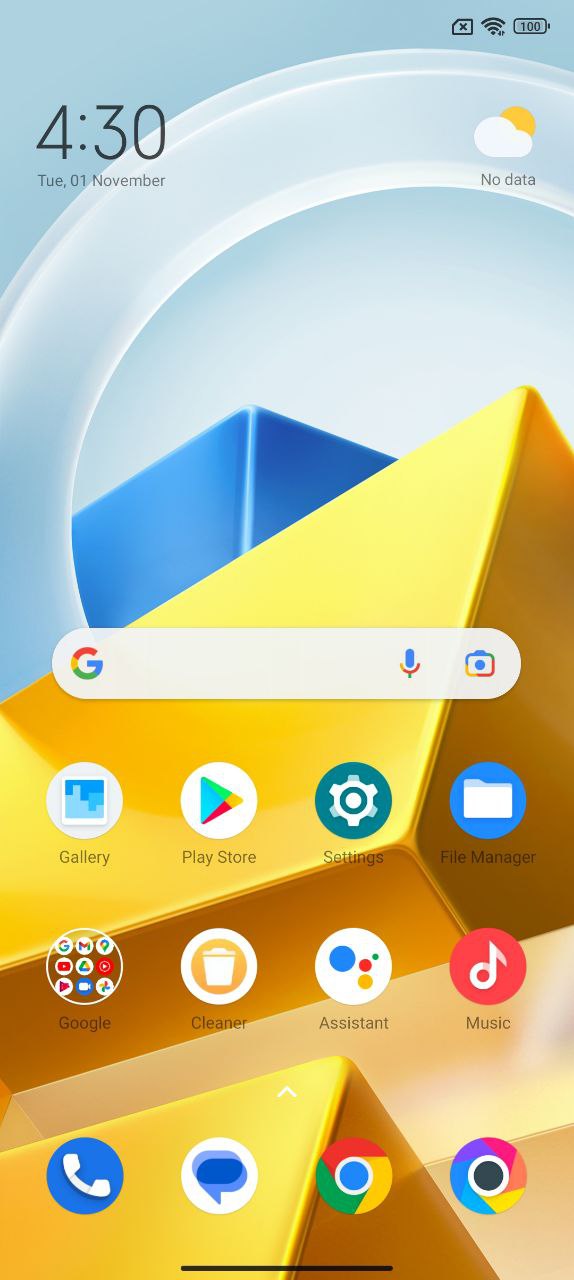
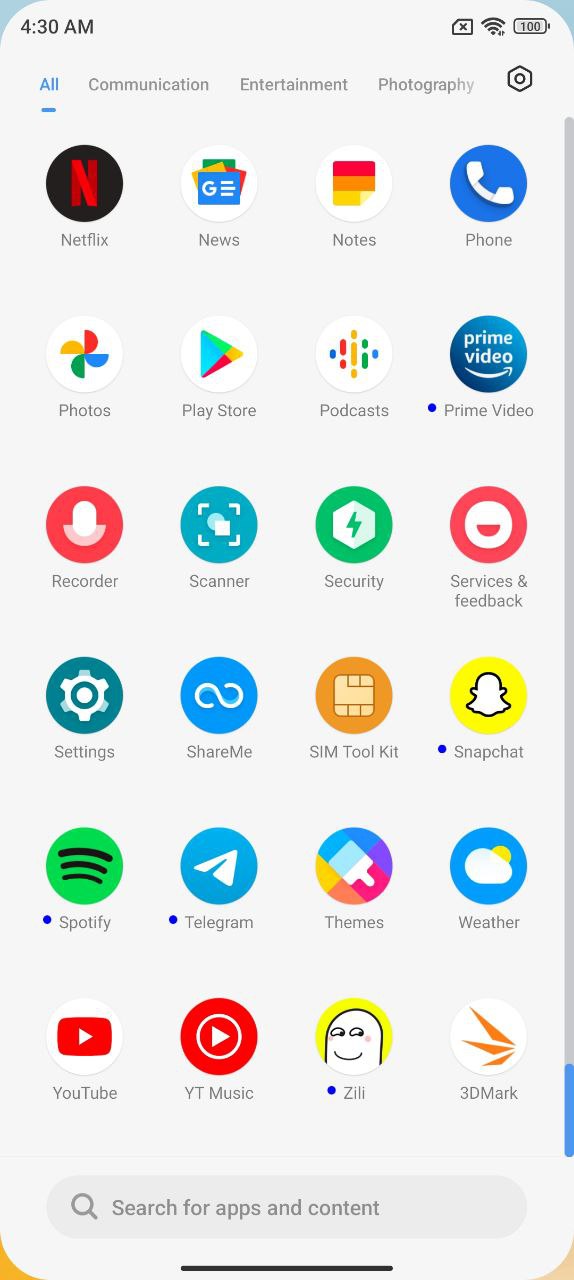
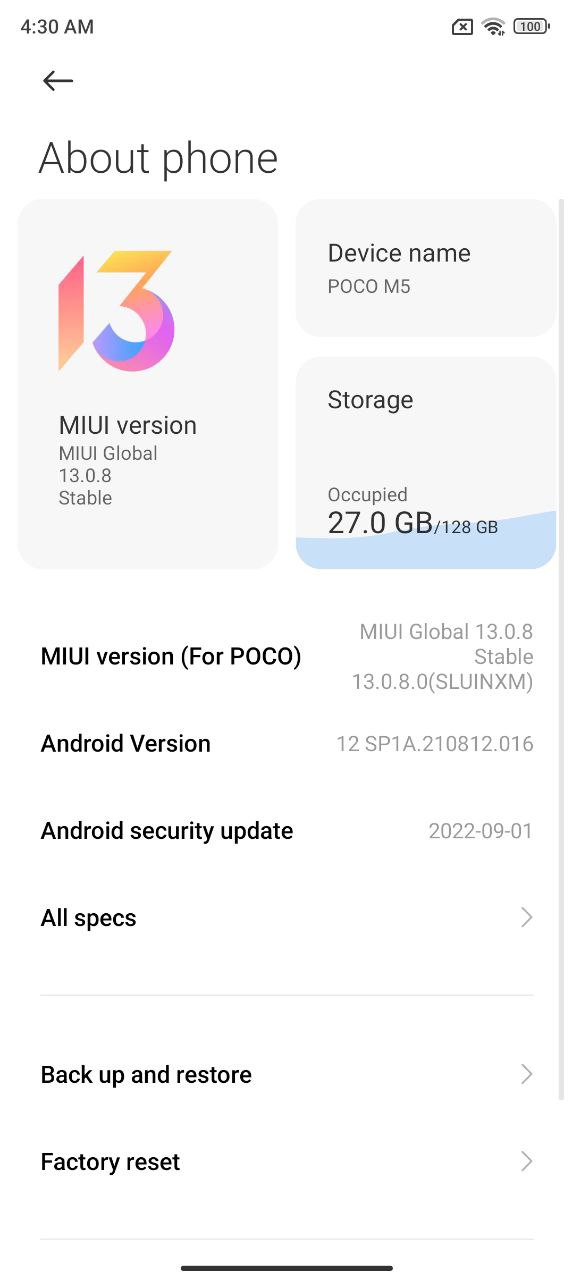
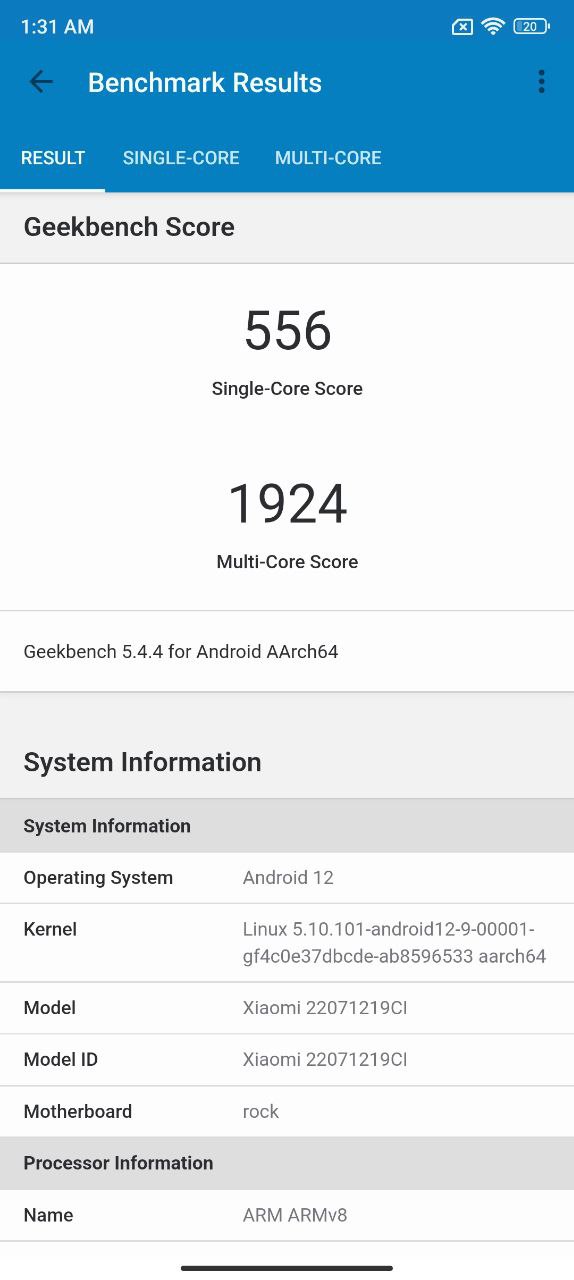
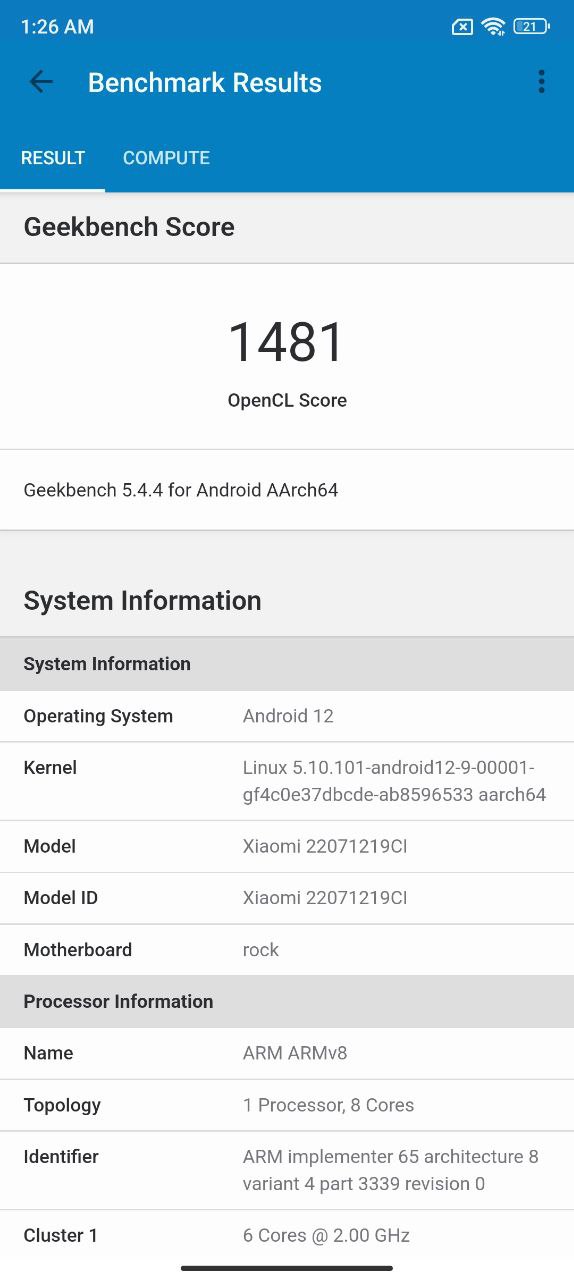
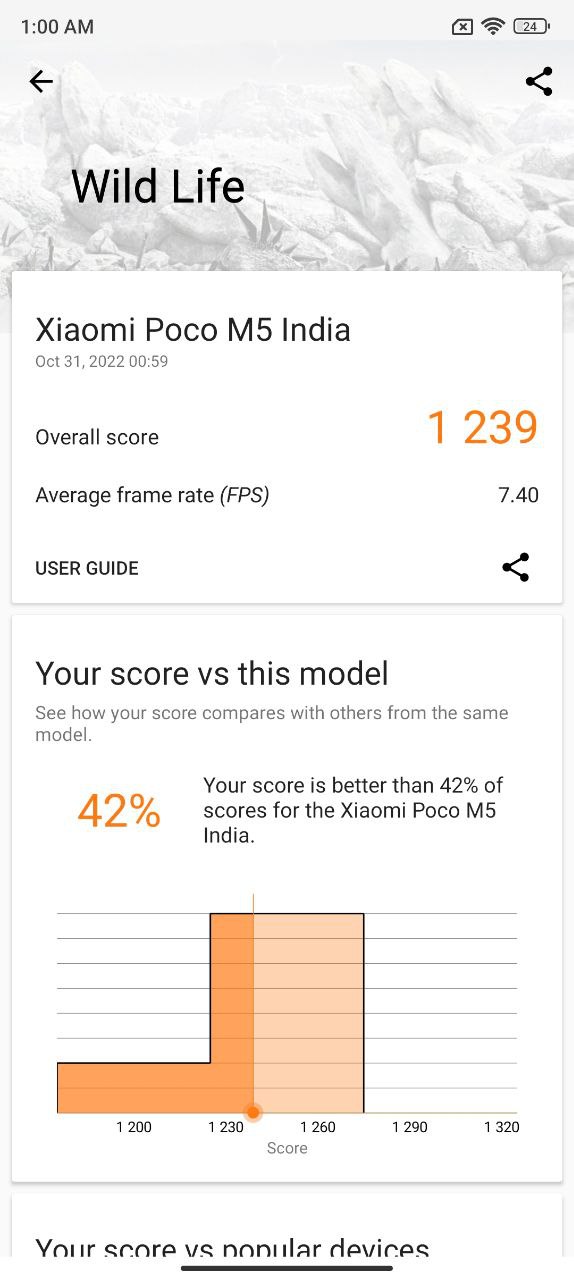


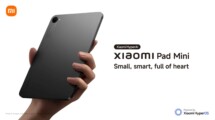

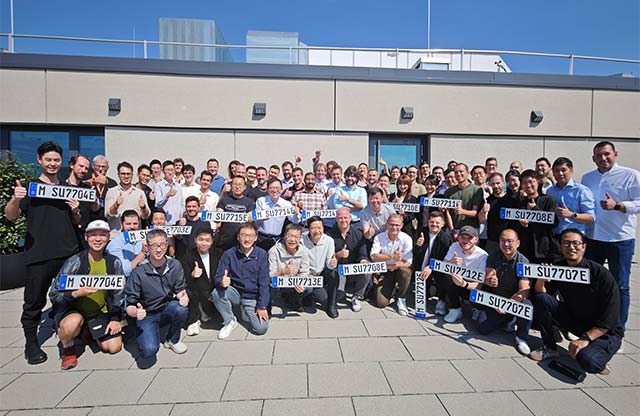
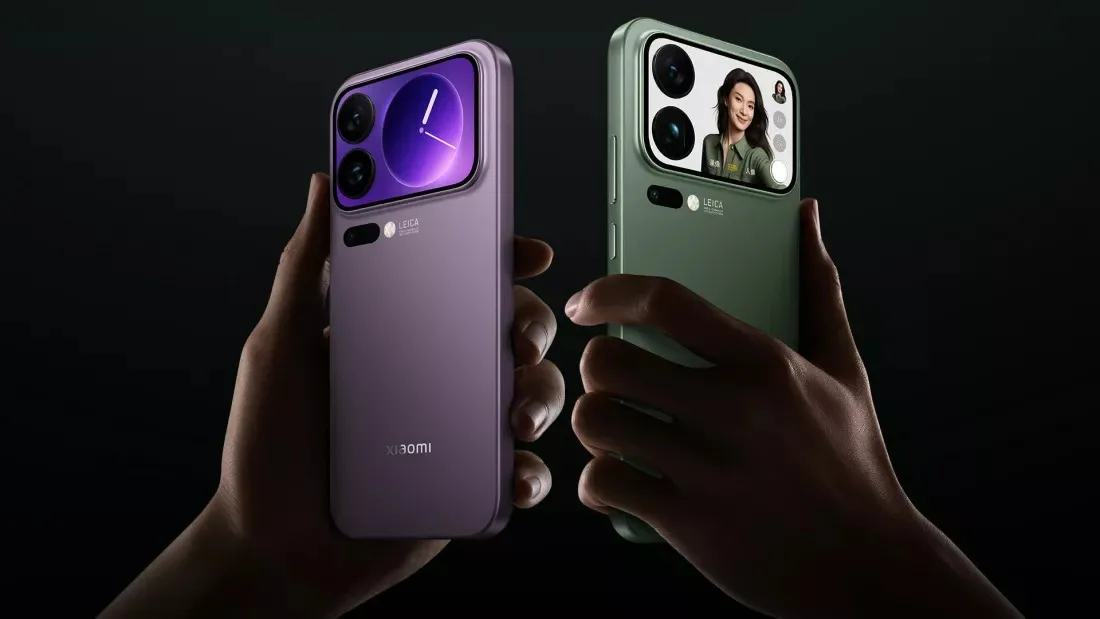
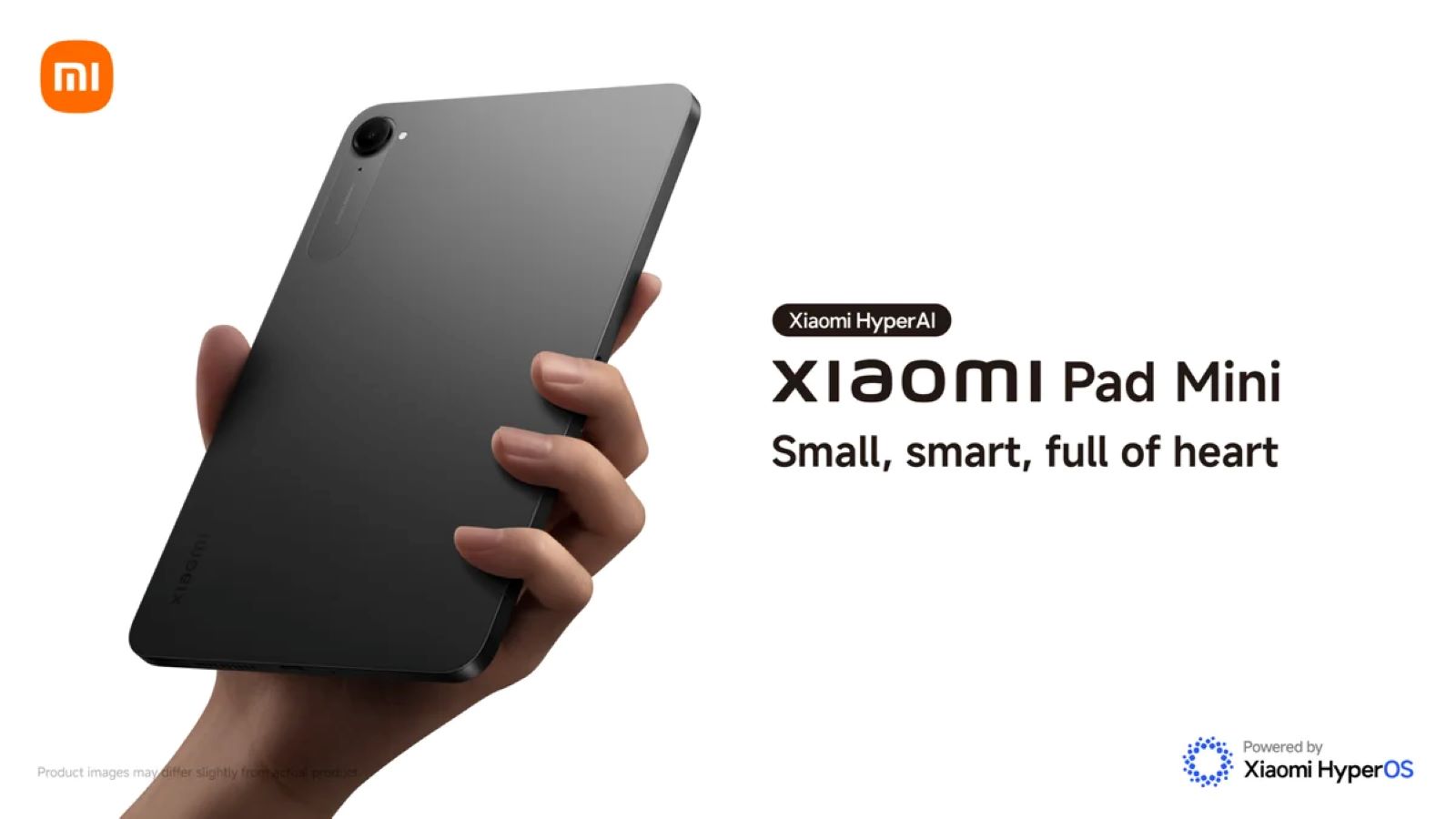
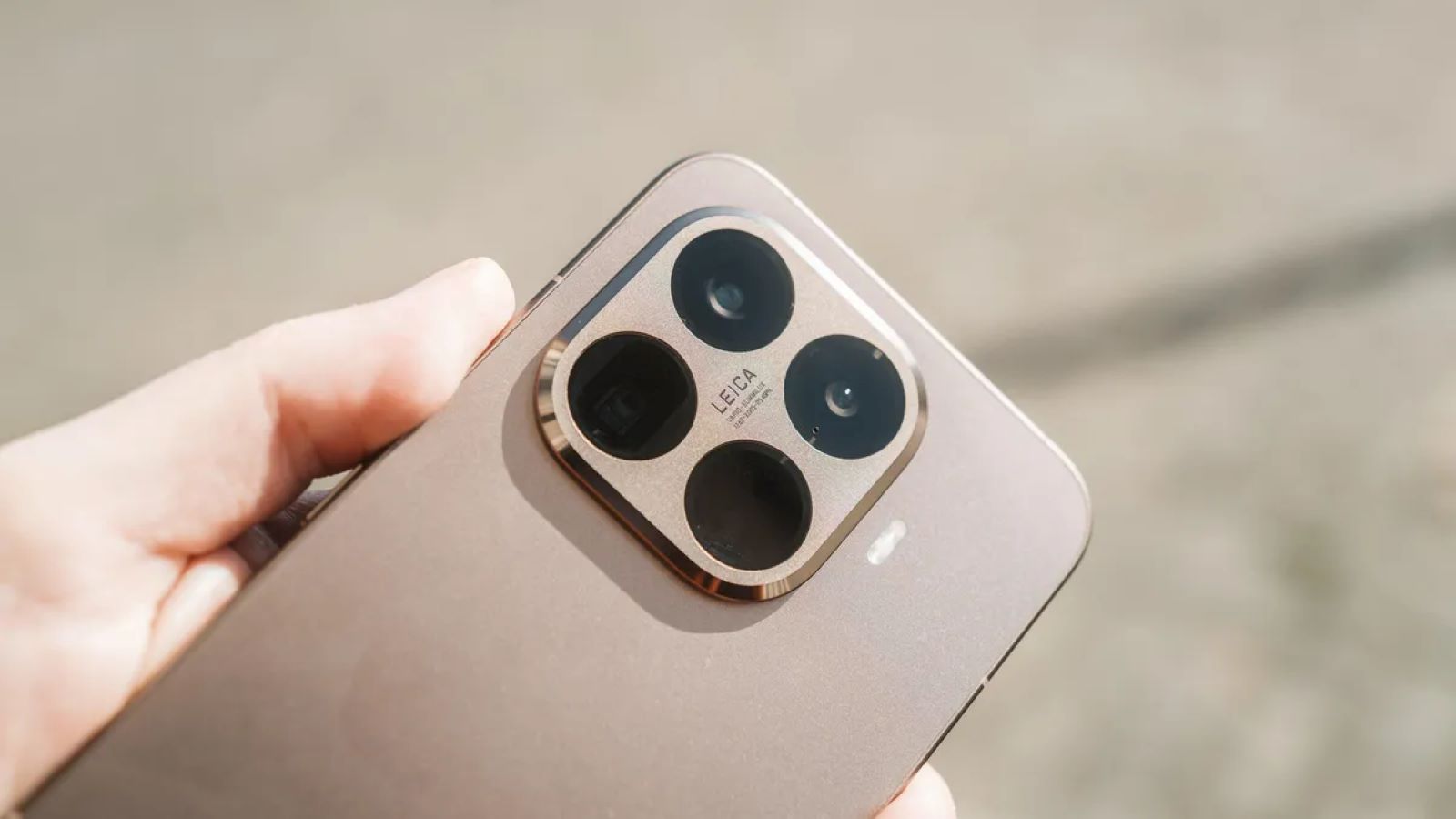
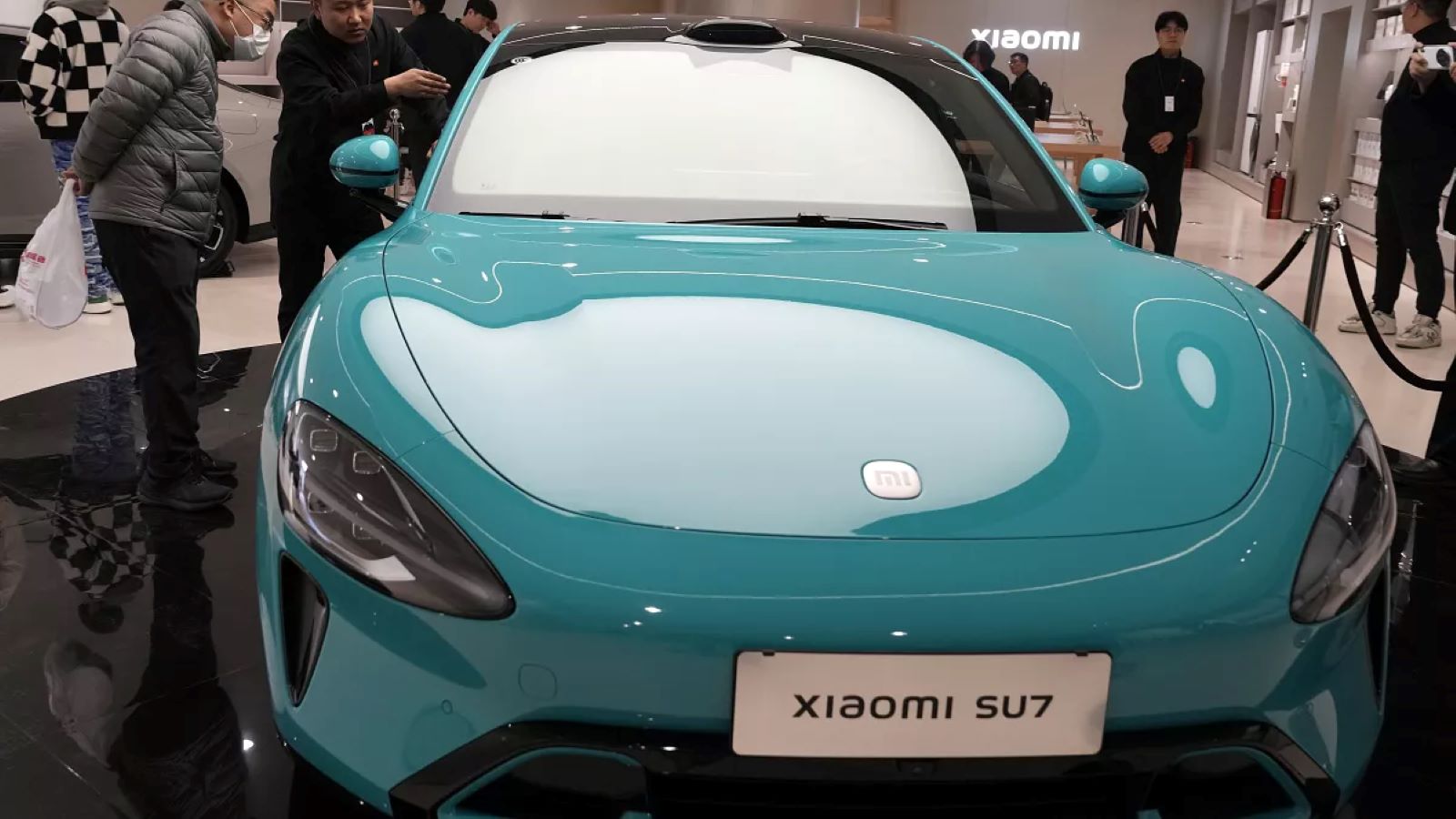
Add Comment